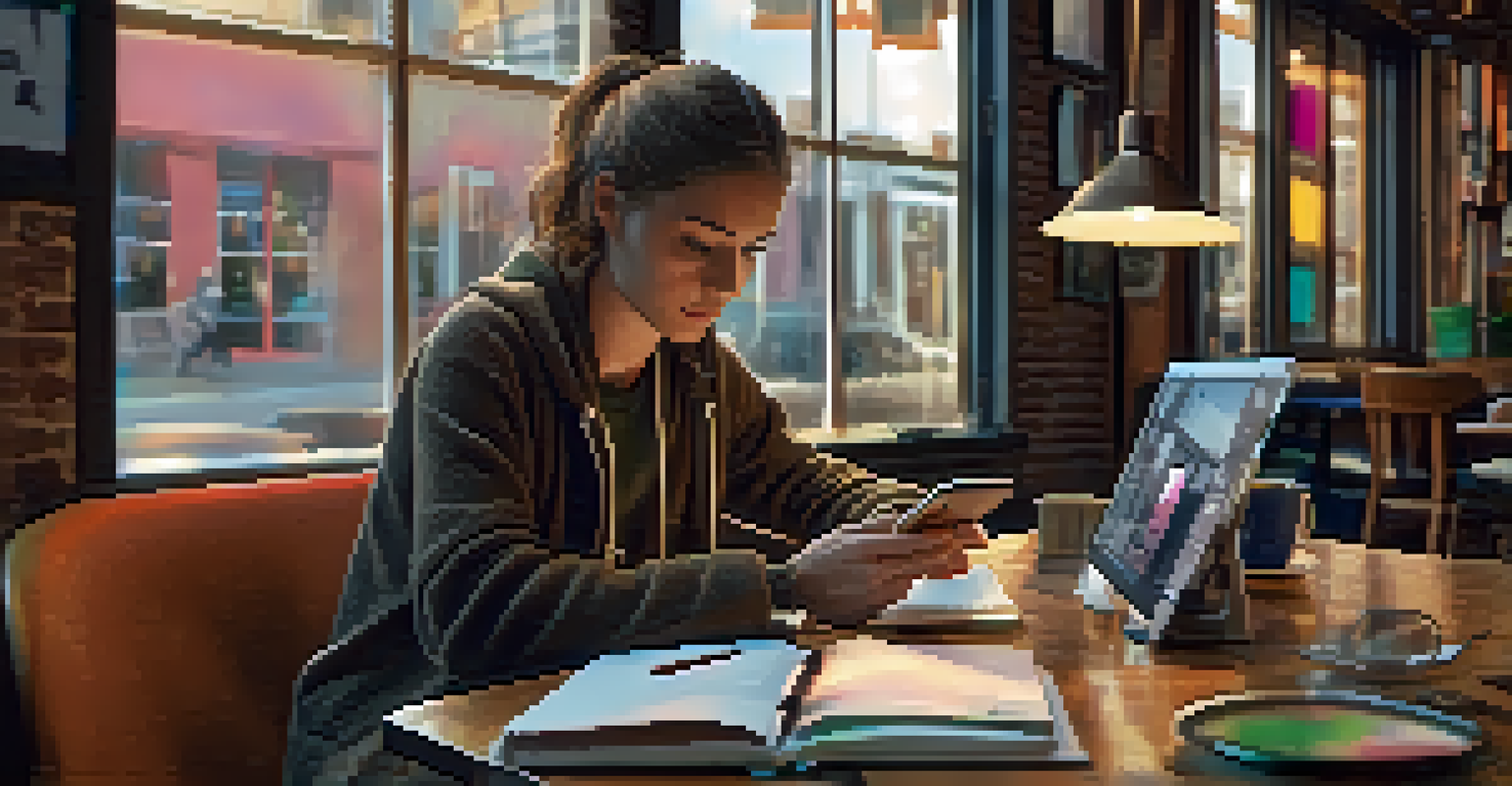Mobile Filmmaking: Empowering Creators with Pocket Technology

Introduction to Mobile Filmmaking: A Game Changer
In recent years, mobile filmmaking has emerged as a powerful tool for creators. With smartphones equipped with high-quality cameras, anyone can tell their story without needing expensive equipment. This democratization of filmmaking is not just a trend; it's a revolution that empowers individuals to express their creativity.
The best camera is the one that's with you.
Imagine being able to capture stunning visuals and edit them right in your pocket. Mobile filmmaking allows creators to work spontaneously, seizing inspiration wherever they find it. From documenting everyday life to crafting short films, the possibilities are endless.
As technology continues to advance, mobile devices are becoming more sophisticated. This means that filmmakers can achieve professional-quality results without the traditional barriers of entry. So, let’s dive into how this exciting medium is reshaping the landscape of visual storytelling.
The Rise of Mobile Filmmaking: A Historical Perspective
The rise of mobile filmmaking can be traced back to the introduction of the first smartphones with cameras. Initially, these devices were seen as a novelty, but as camera technology improved, filmmakers recognized their potential. Early pioneers experimented with short films, showcasing the capabilities of mobile devices.

Fast forward to today, and we see a vibrant community of mobile filmmakers making waves in the industry. Festivals like the Mobile Motion Film Festival highlight the incredible talent emerging from this medium. These events not only celebrate creativity but also inspire others to pick up their phones and start filming.
Mobile Filmmaking Empowers Creators
With smartphones and editing apps, anyone can create professional-quality films, democratizing the art of storytelling.
This growth in mobile filmmaking reflects a broader trend towards accessibility in the arts. Just as digital cameras transformed photography, smartphones are redefining the way we create and share films. This shift encourages a new generation of storytellers to explore their craft without limitations.
Key Features of Mobile Filmmaking Tools
What makes mobile filmmaking so appealing? One of the key features is the portability of smartphones. Unlike traditional cameras, which can be bulky and require additional gear, smartphones fit easily in your pocket. This means you can capture spontaneous moments without missing a beat.
Everyone has a story to tell. We just need to give them the tools to tell it.
Additionally, the apps available for editing and enhancing videos have come a long way. Applications like Adobe Premiere Rush and iMovie allow filmmakers to edit on the go, making it simple to piece together a polished final product. With just a few taps, creators can add music, filters, and effects.
Moreover, the integration of advanced features like slow-motion and time-lapse photography enriches the storytelling experience. These tools empower creators to explore their artistic vision in ways that were once limited to professional setups. Mobile filmmaking truly puts the power of creation at your fingertips.
Techniques for Success in Mobile Filmmaking
To make the most of mobile filmmaking, creators should focus on a few essential techniques. First, understanding lighting is crucial. Natural light can be your best friend, but knowing how to work with different lighting conditions can elevate your footage dramatically. Consider shooting during the golden hour for that perfect glow.
Next, composition plays a vital role in storytelling. The rule of thirds can help frame your shots effectively, guiding the viewer’s eye where you want it to go. Experimenting with different angles and perspectives can add depth and interest to your videos.
Social Media Boosts Filmmaker Reach
Platforms like TikTok and Instagram allow filmmakers to share their work globally and connect with audiences instantly.
Lastly, sound should never be overlooked. Clear audio can make or break a film, so invest in a good microphone if possible. Even simple techniques, like recording in a quiet environment, can significantly enhance the viewer's experience, making your stories more impactful.
The Role of Social Media in Mobile Filmmaking
Social media platforms have transformed how we share our mobile films. With apps like Instagram, TikTok, and YouTube, filmmakers can reach audiences worldwide instantly. This accessibility has given rise to viral trends, where short, engaging content can capture the attention of millions.
These platforms also serve as a testing ground for new filmmakers. By posting their work online, creators can receive immediate feedback, allowing them to refine their skills and discover their audience. This interaction fosters a sense of community among filmmakers, encouraging collaboration and support.
Moreover, social media has opened doors for creators to monetize their work. Brands are increasingly looking for authentic content from micro-influencers, creating opportunities for mobile filmmakers to earn income. This shift not only validates their craft but also highlights the importance of storytelling in digital marketing.
Challenges Faced by Mobile Filmmakers
While mobile filmmaking offers many advantages, it's not without its challenges. One significant hurdle is the limitation of battery life and storage space. Filmmakers need to be strategic about managing these resources, especially during long shoots. Carrying portable chargers and backup storage solutions can help mitigate this issue.
Another challenge is the potential for distractions. Filming with a smartphone can mean constant notifications and interruptions, which can disrupt the creative flow. To combat this, filmmakers can turn on 'Do Not Disturb' mode, allowing them to focus solely on their project.
Challenges in Mobile Filmmaking
Filmmakers face hurdles such as battery life, distractions, and the need for unique content to stand out in a crowded space.
Lastly, the sheer volume of content being created can make it difficult to stand out. With so many filmmakers entering the scene, finding a unique voice and style is essential. This requires continuous learning and experimentation, but it's also an opportunity for growth and innovation.
The Future of Mobile Filmmaking
As technology continues to advance, the future of mobile filmmaking looks bright. New innovations, like augmented reality (AR) and virtual reality (VR), are beginning to blend with mobile filmmaking, offering exciting possibilities for storytelling. Imagine creating immersive experiences that transport viewers to another world—all from your smartphone.
Furthermore, as mobile devices become more powerful, we can expect even higher-quality video production capabilities. Features like 8K recording and advanced stabilization systems are already becoming standard in flagship smartphones. This evolution will only enhance the creative potential for filmmakers.

Ultimately, the future of mobile filmmaking is about inclusivity and creativity. As more people gain access to powerful tools in their pockets, we can anticipate a diverse range of voices and stories emerging. This evolution will continue to redefine what it means to be a filmmaker in the digital age.